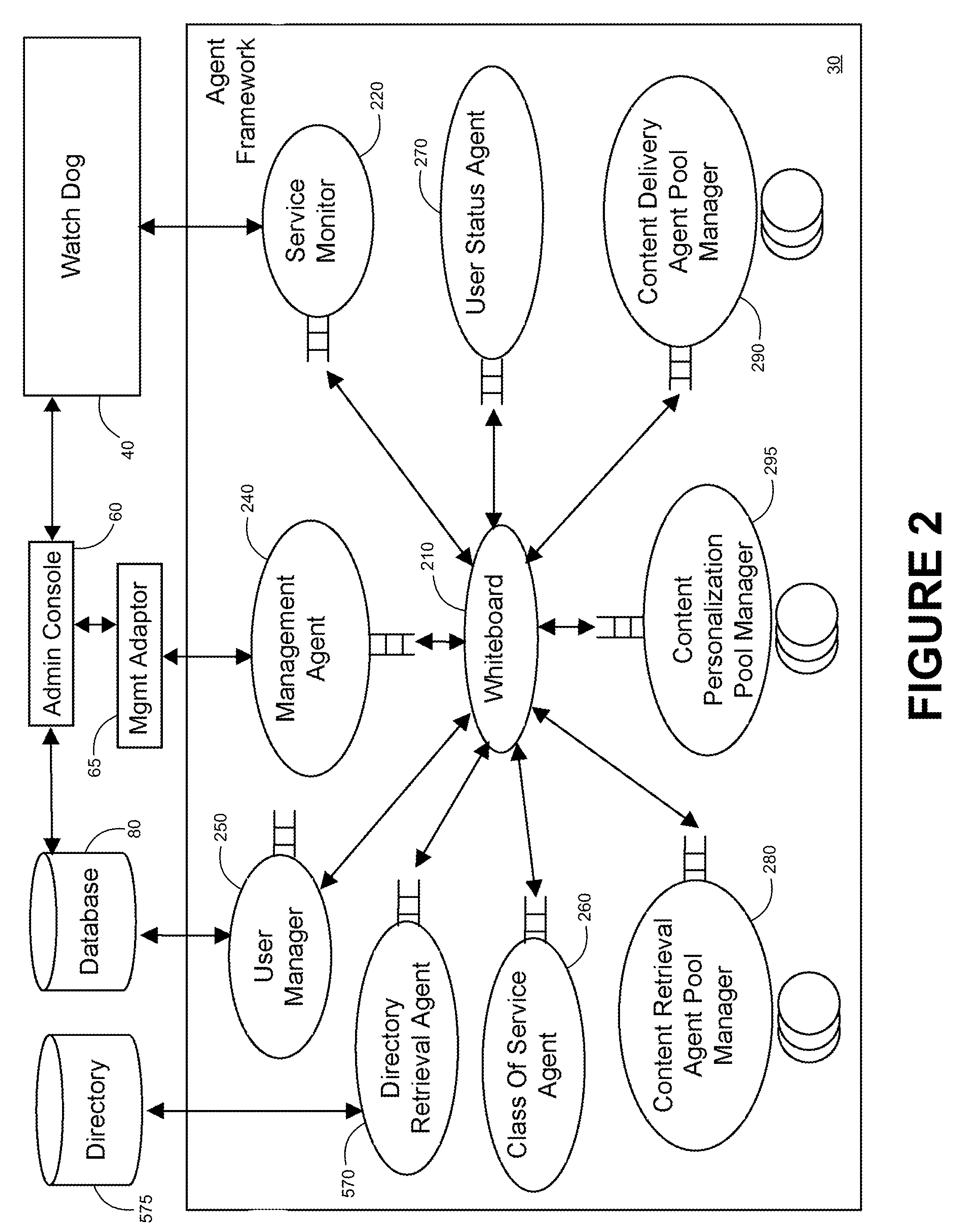Processing of network content and services for mobile or fixed devices
a network content and mobile or fixed device technology, applied in the field of network communication systems, can solve the problems of personal data assistants, high price of emerging “combo” devices such as blackberryTM pearlTM or appleTM iphoneTM, and solve the problem of critical drawbacks of solutions, and achieve the effect of preventing overloading
- Summary
- Abstract
- Description
- Claims
- Application Information
AI Technical Summary
Benefits of technology
Problems solved by technology
Method used
Image
Examples
Embodiment Construction
[0030]The advantages of the invention may be obtained through the exemplary system described hereinafter with reference to the drawings. Where appropriate, the same reference numerals are used in the drawings to indicate like features in all of the drawings.
System Overview
[0031]The system provides for the determination of the user's context, the retrieval of a user's messages and other selected content, the processing of such messages or other content for the intelligent miniaturization or other tailoring thereof for the user's mobile device or a set of designated delegates' mobile devices, and the forwarding of the processed content to the device(s). Such content may include: passive content—e.g., extracted from messages and informational in nature); or active content—e.g., also extracted from messages, which the user can use to trigger actions such as making a call, starting a chat, ordering payment for a service or product, etc.
[0032]The system is adaptable to retrieve messages f...
PUM
 Login to View More
Login to View More Abstract
Description
Claims
Application Information
 Login to View More
Login to View More - R&D
- Intellectual Property
- Life Sciences
- Materials
- Tech Scout
- Unparalleled Data Quality
- Higher Quality Content
- 60% Fewer Hallucinations
Browse by: Latest US Patents, China's latest patents, Technical Efficacy Thesaurus, Application Domain, Technology Topic, Popular Technical Reports.
© 2025 PatSnap. All rights reserved.Legal|Privacy policy|Modern Slavery Act Transparency Statement|Sitemap|About US| Contact US: help@patsnap.com



